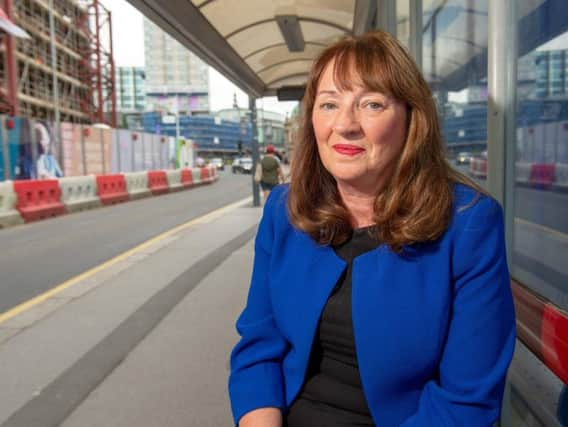Academics asked to shape 'mass transit system' for West Yorkshire


Experts from the university’s Institute for Railway Research will be among the promoters, manufacturers, suppliers, constructors, engineers, system developers and operators expected to feed into plans being developed by West Yorkshire Combined Authority (WYCA).
The Combined Authority – a group of leading councillors and officers from West Yorkshire councils, plus York, that works on major infrastructure projects – aims to develop initial designs for an advanced urban transit system that can be delivered by 2033.
Advertisement
Hide AdAdvertisement
Hide AdIt says the project will ensure the whole of the Leeds City Region can benefit from major infrastructure investment including HS2 and Northern Powerhouse Rail.
News of the consultation follows the unveiling, last November, of ambitious plans for a third attempt at a mass rapid transit system for Leeds.
Previous schemes included a Supertram and trolley bus proposals, both of which collapsed.
Indicative maps for the mass transit system showed routes extending into North Kirklees.
Advertisement
Hide AdAdvertisement
Hide AdThat prompted fears that officials had earmarked the route of the Spen Valley Greenway, itself a former train line, for the Kirklees section to run from Mirfield up to Low Moor station in the south of Bradford.
Transport officials plotted three potential new lines out of the city, one of which goes west into south Bradford and then south again into Cleckheaton, Heckmondwike and Dewsbury.
Commenting at the time officials behind the plan said services would be “entirely new” and “complementary but separate to the existing heavy rail network”.
Vehicles are expected to enable 200 to 300 people to get on/off at every stop and could be traditional light rail or tram train running on steel wheels, or bus rapid transit-based running on rubber tyres.
Advertisement
Hide AdAdvertisement
Hide AdThey are expected to have an operational life of 20 to 30 years.
WYCA says the Leeds City Region, which has a population of three million people and an economy of £69.6 billion GVA, remains the largest metropolitan area in Europe without an urban transit system.
The authority has now begun market testing its ideas with “industry leaders and innovators”.
Individuals and organisations such as the university are being asked to consider a system with end-to-end routes of between 10 and 30km, with frequent city centre stops and stops every kilometre or so in other areas.
Advertisement
Hide AdAdvertisement
Hide AdRoutes, they are being told, could run through pedestrian and heritage environments in city centres and urban areas.
Councillor Kim Groves, Chair of WYCA, said mass transit was not a solution to all the region’s transport challenges and that some areas would not be served.
But she said it would assist in the expansion of the region’s economy as thousands of new jobs are created.
She commented: “There is no doubt that if the Leeds City Region is going to achieve its full economic potential while at the same time meeting the ambitious environmental goals we have set ourselves, we need a modern mass transit system to connect people quickly and cleanly with areas of growth.”